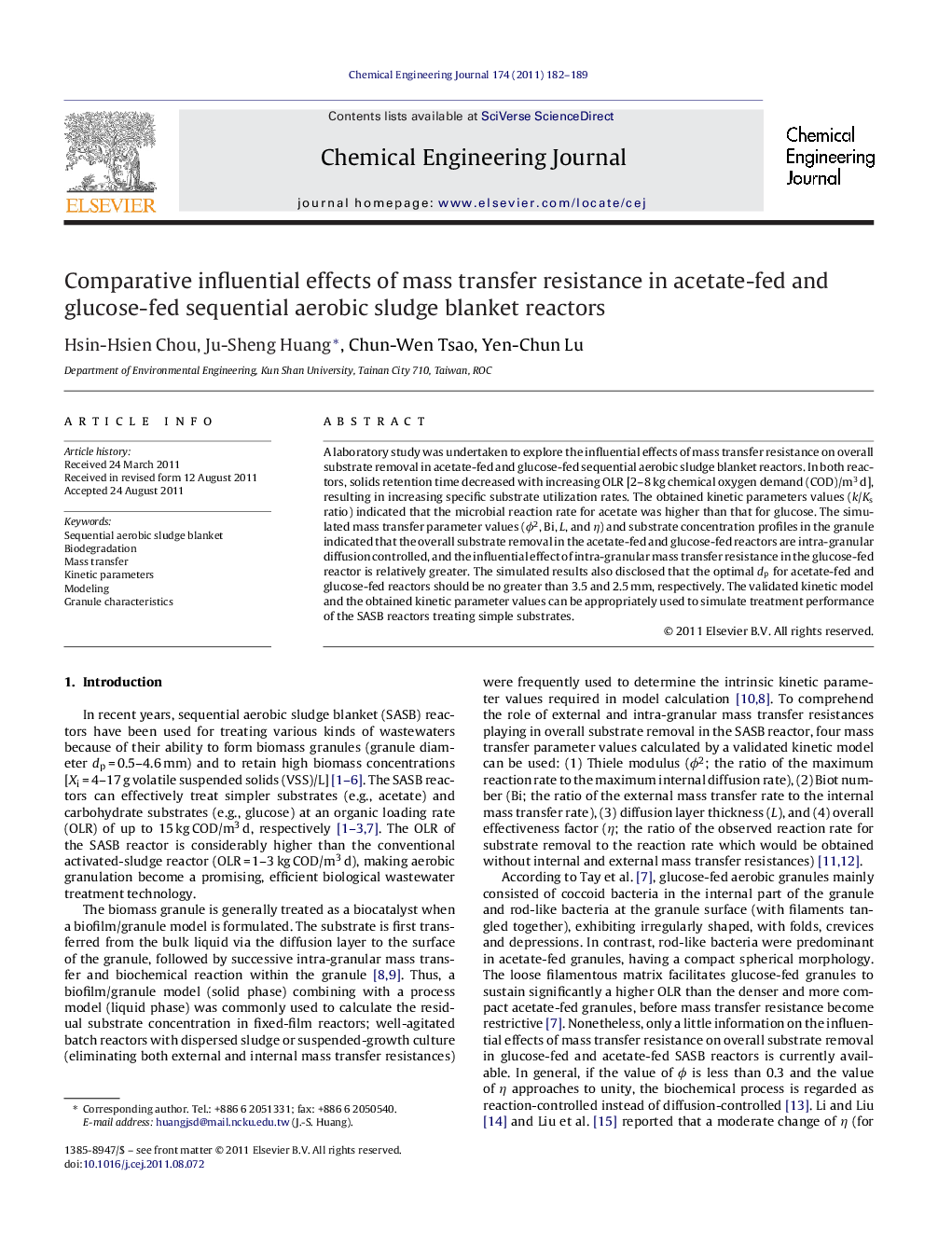| کد مقاله | کد نشریه | سال انتشار | مقاله انگلیسی | نسخه تمام متن |
|---|---|---|---|---|
| 150520 | 456451 | 2011 | 8 صفحه PDF | دانلود رایگان |

A laboratory study was undertaken to explore the influential effects of mass transfer resistance on overall substrate removal in acetate-fed and glucose-fed sequential aerobic sludge blanket reactors. In both reactors, solids retention time decreased with increasing OLR [2–8 kg chemical oxygen demand (COD)/m3 d], resulting in increasing specific substrate utilization rates. The obtained kinetic parameters values (k/Ks ratio) indicated that the microbial reaction rate for acetate was higher than that for glucose. The simulated mass transfer parameter values (ϕ2, Bi, L, and η) and substrate concentration profiles in the granule indicated that the overall substrate removal in the acetate-fed and glucose-fed reactors are intra-granular diffusion controlled, and the influential effect of intra-granular mass transfer resistance in the glucose-fed reactor is relatively greater. The simulated results also disclosed that the optimal dp for acetate-fed and glucose-fed reactors should be no greater than 3.5 and 2.5 mm, respectively. The validated kinetic model and the obtained kinetic parameter values can be appropriately used to simulate treatment performance of the SASB reactors treating simple substrates.
► A laboratory study was undertaken to explore the influential effect of mass transfer resistance on overall substrate removal in acetate-fed and glucose-fed sequential aerobic sludge blanket (SASB) reactors.
► The size of acetate-fed granules was smaller than that of glucose-fed granules while the biomass density of the former was slightly higher than that of the latter. The obtained kinetic parameters (k/Ks ratios) indicated that the microbial reaction rate for acetate was higher than that for glucose.
► The calculated COD removal efficiencies using the kinetic model (incorporating intrinsic kinetics) agreed well with the experimental results, implying that the proposed model can properly describe the overall substrate removal rate in the SASB reactor.
► By applying the validated kinetic model, the simulated mass transfer parameter values (ϕ2, Bi, L, and η) and substrate concentration profiles in the granule indicated that the overall substrate removal in the acetate-fed and glucose-fed reactors are evidently intra-granular diffusion controlled, and the influential effect of glucose-fed granules is greater than acetate-fed granules.
► The simulated results disclosed that the optimal granular sizes for acetate-fed and glucose-fed reactors should be no greater than 3.5 and 2.0–2.5 mm, respectively.
Journal: Chemical Engineering Journal - Volume 174, Issue 1, 15 October 2011, Pages 182–189